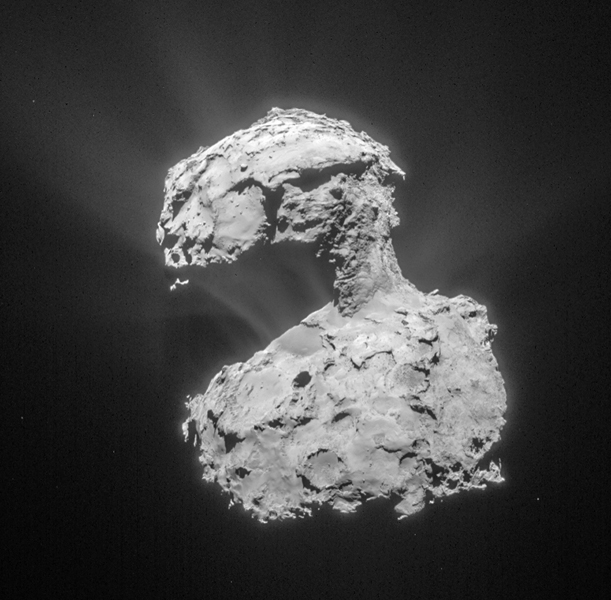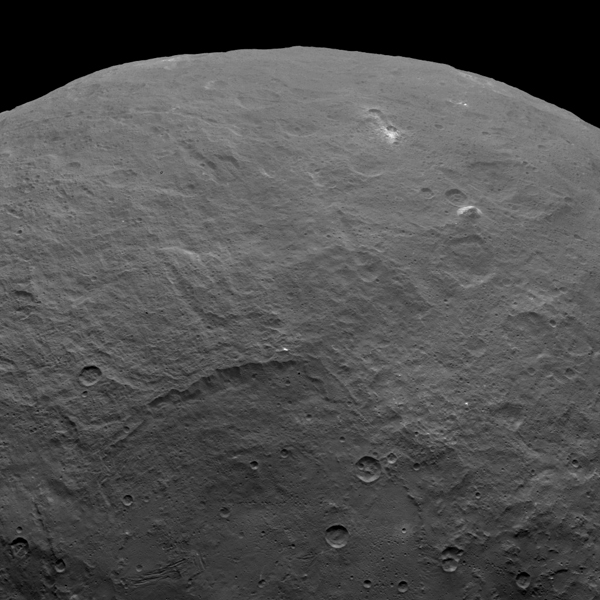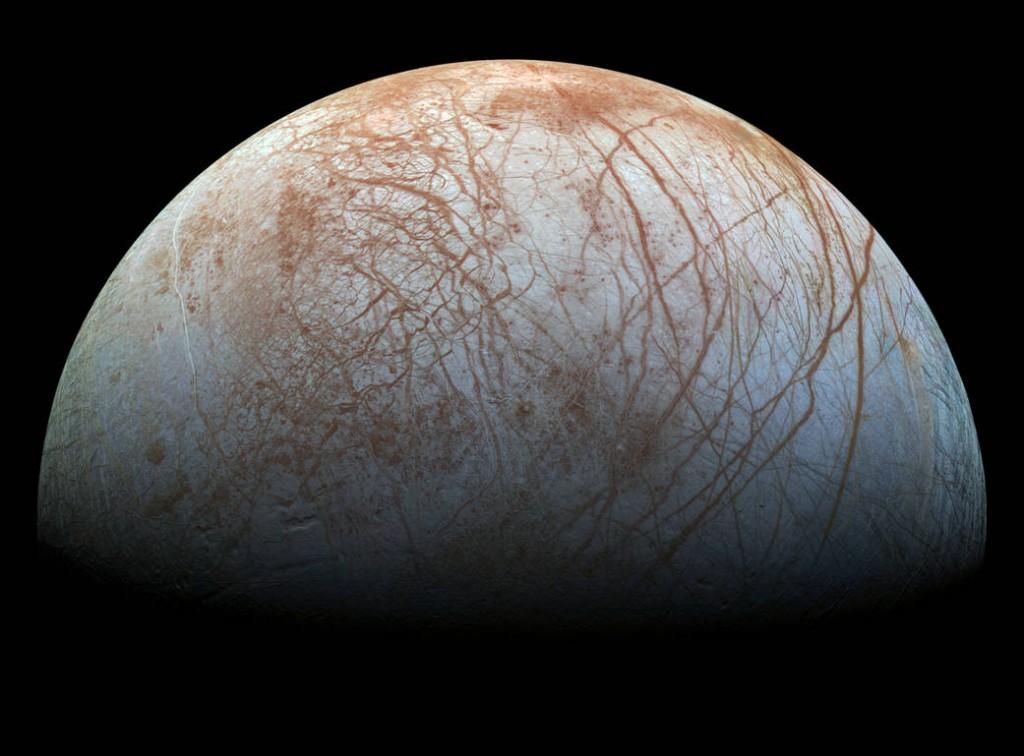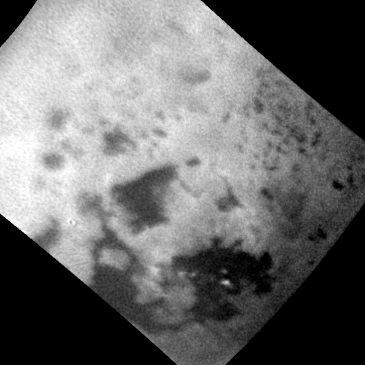There’ve been some stunning pictures recently sent back from distant parts of our solar system which I wanted to share.
When I was a boy, people could only imagine what a comet actually looks like. Now we know.

Comet 67P/Churyumov-Gerasimenko as seen from 86 kilometers by European Space Agency Rosetta mission in March 2015. Image courtesy of ESA/Rosetta/NAVCAM.
NASA’s Dawn probe, launched from earth in 2007, this month sent back some phenomenal pictures of the dwarf planet Ceres, whose 1000 km diameter makes it the largest object in the asteroid belt. Remarkable features include some extremely bright reflective areas and a 3-mile-high pyramid.

Bright spots on dwarf planet Ceres. Image courtesy of NASA/JPL-Caltech/UCLA/MPS/DLR/IDA.

Pyramid structure on dwarf planet Ceres. Image courtesy of NASA/JPL-Caltech/UCLA/MPS/DLR/IDA.
Jupiter’s moon Europa, despite being stuck a frigid 3/4 of a billion kilometers away from the sun, is now believed to hold a liquid ocean of water beneath its icy crust, kept warm by the tidal forces of the gravitational pull from the giant planet. And perhaps life in those oceans? You can bet I’m a big supporter of NASA’s plans for a new mission to see what’s there.

Realistic color image of Europa constructed from mosaic of images taken by NASA’s Galileo Probe. Surface is mostly water ice with red-brown cracks and ridges containing significant amounts of other materials. Image courtesy of NASA/JPL-Caltech/SETI Institute.
Saturn’s moon Titan definitely has clouds that rain down on surface oceans. But its weather patterns are based on liquid methane, not H20.

Clouds moving over the Ligeia Mare, a large methane sea of Titan, based on images taken by the Cassini orbiter. Image courtesy of NASA/JPL-Caltech/Space Science Institute.
Geysers spewing water ice out from Enceladus, another of Saturn’s many moons, appear to be the source of one of the giant planet’s beautiful rings.

Geyser basin on Enceladus as seen from Cassini. Image courtesy of NASA/JPL-Caltech/Space Science Institute.
Like many others of my generation, I was sad to see Pluto demoted from its long-held status as our solar system’s ninth planet. But that disappointment is made up for by the remarkable recent images from NASA’s New Horizons probe of Pluto and its moon Charon in their orbital dance. Can’t wait to see the close-ups.

Week-long time-lapse pictures of Pluto and Charon taken from 100 million kilometers away by New Horizons. Image courtesy of NASA/Johns Hopkins University Applied Physics Laboratory/Southwest Research Institute.
lovely post. i like to think people felt the same sense of wonder as they explored our own planet over the past 500 years, wondering about the unknowns at the end of the world!
Very nice. And I’m with you on the planned NASA project to Europa, although I’ve become a little less enthusiastic about manned (womanned?) flights having lost a family friend and occasional dinner guest with the Columbia shuttle.
There’s also an econ angle here. Space exploration is not cheap and while private endeavors are possible in some cases, the pure research part pretty much has to be government funded. That means paying taxes to support it. And it means the knowledge gained from these missions should be freely available. A pretty good example of a pure public good that is non-rivalrous.
Fantastic! Thanks.
Do you have to ruin every blog post slugbait?